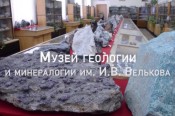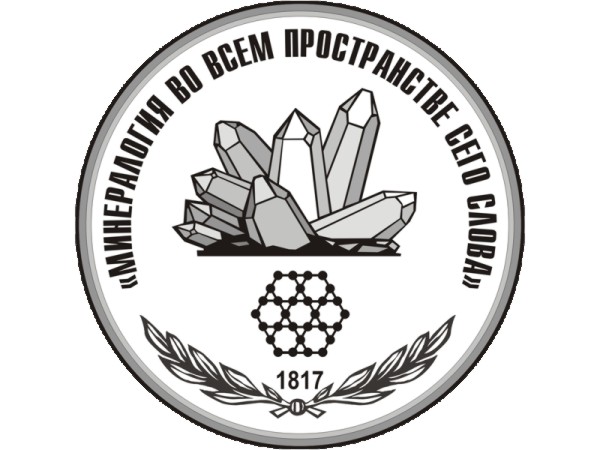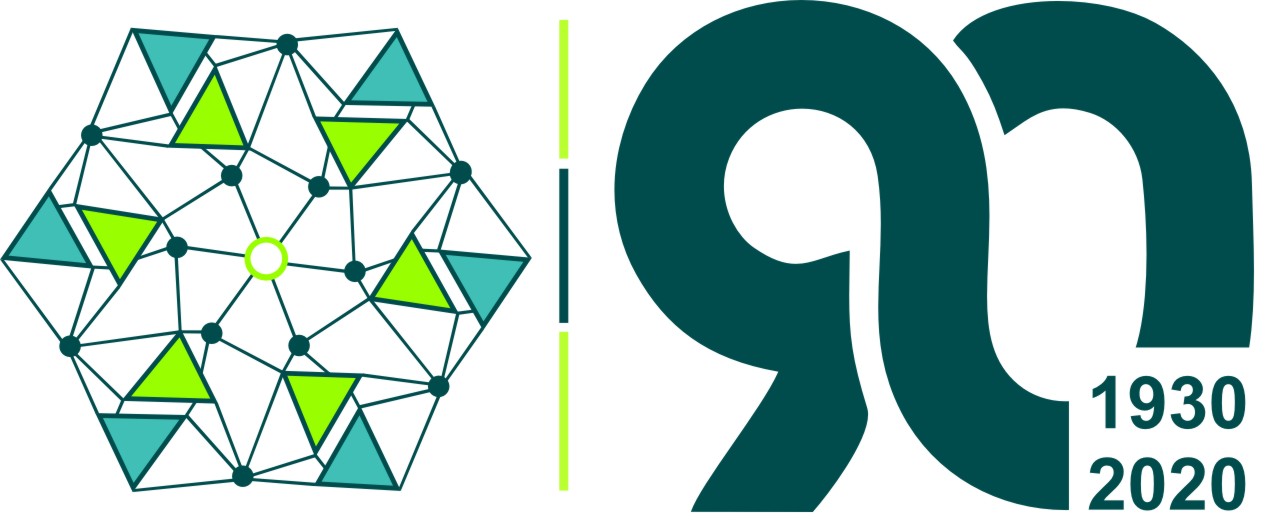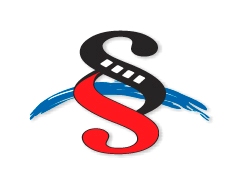Материалы
International cooperation 2017
In 2017, within the framework of 5 international projects, 6 memorandums and cooperation agreements, GI KSC RAS maintained contacts with scientific organizations from 16 countries: Australia, Austria, Belgium, Bulgaria, United Kingdom, Germany, Greece, India, Norway, Poland, USA, Turkey, Finland, France, Sweden and Estonia.
Four employees went abroad within the framework of 7 foreign business trips to participate in international conferences, meetings, working meetings and discussions of prospects for cooperation.
In the framework of 5 receptions, 69 specialists from 6 countries - Belgium, Germany, USA, Finland, France and Sweden visited GI KSC RAS:.
In 2017, work continued on the compilation of the ore deposit database of Fennoscandia and the corresponding metallogenic map in the framework of the “Critical Metals and Minerals in Fennoscandia” project, which continued the FODD project (Fennoscandian Ore Deposit Database and Metallogenic Map). The partners of GI KSC RAS (head – Dr. Sc. (geol.-min.), Prof. Yu.L. Voytekhovsky): Geological Survey of Finland, Geological Survey of Sweden, Geological Survey of Norway, State Geological Unitary Enterprise under the Administration of St. Petersburg “Mineral” (Russia) and IG KarSC RAS. The goal of the project is to compile an electronic database on the deposits of critical minerals and metals of Fennoscandia (Be, Ga, Ge, In, Li, Nb, Sc, Ta, Te, PGE, etc.) with an annual presentation of its updates.
In 2017, the researches on the project “Hydrothermal change in minerals of the chevkinite group” (head Ph.D (geol.-min.) D.R. Zozulya) that was launched in 2012 continued. The partners of GI KSC RAS: Institute of Geochemistry, Mineralogy and Petrology, the University of Warsaw (Poland) and the University of Lancaster (United Kingdom). The goal of the project is to study the scarce REE titanosilicate - chevkinite. The basis of the research is the study of changes in the chemical composition of chevkinite under the influence of hydrothermal solutions. The ultimate goal of the project is the publication of two scientific articles in high-rated foreign scientific journals. Results. Mineralogical studies of rare-metal quartzolits of the Keivy alkaline province were carried out in order to clarify the role of late hydrothermal solutions in changing minerals like fluorbritholite-(Y) and yttrialite-(Y). It is shown that the main mechanism of change is the process of dissolution-co-precipitation. The hydrothermal solutions were highly alkaline in composition and contained a number of ligands (complexes of F and CO2 and, to a lesser extent, others) capable of transferring REE, HFSE and actinides. For 2018, it is planned to conduct analytical studies at the University of Warsaw, aimed at studying the rare-metal mineralization of alkaline granite pegmatite of the White Tundras massif.
In 2017, the joint studies of GI KSC RAS and the University of California (USA) on the topic “Reduced carbon in the Earth: origin, forms and dislocations” were completed (Alfred P. Sloan grant No. 2011-6-01, 2015-2017, head - Dr. Sci. (chem.) I.N. Tolstikhin). The goal of the project is to replenish the Noble Gas Data Base (NG DB) by sampling from the previously missed and new sources (published works, dissertations, research reports etc.). Krypton and xenon should also be included in the heavy noble gas database. They allow one to simulate the fractionation processes in the water/gas/oil system during the formation of the hydrocarbon phase and estimate the time scales of fluid evolution using the ratio of xenon 36Xe*, which arose during spontaneous fission of 238U, to the isotope 130Xe of atmospheric origin. Results. In 2017, the project goal was achieved: about 2,000 new samples containing the data on isotopy of light noble gases in natural fluids were added to the database. Currently, the base is the world largest (8,227 samples). In addition, it includes about 450 samples containing the data on xenon and krypton isotopy. Currently, a new database and comments on it are posted on the “Deep Carbon Observatory” website instead of the previous version of the database (prepared in 2015).
Within the framework of the agreement on cooperation between GI KSC RAS and Maria Skłodowska-Curie University (2014–2023) negotiations are conducted on joint publications on the mineralogy of Monchepluton and possibilities of an equivalent exchange of specialists.
In 2017, the specialists of GI KSC RAS attended a number of international conferences abroad: Dr.Sc. (chem.) I.N. Tolstikhin took part in a workshop on investigation of processes in the auroral atmosphere, traditionally conducted by the Sodankyla Geophysical Observatory (Sodankyla, Finland, March 25 - April 8, 2017 and June 1-16, 2017), at the conference named after V. Goldschmidt and the International Meeting on Geochemistry of Noble Gases (Paris, France, 10-18 August 2017).
Ph.D. (tech) M.V. Kovalevskiy made a presentation “100 years of joint cooperation - scientific, innovative and public cooperation using modern technologies” at the international meeting of the District Organization of Northern Finland “Finland-Russia” (Kuusamo, Finland, April 21-23, 2017).
Dr.Sc. (tech) F.F. Gorbatsevich and Dr.Sc. (geol.-min.) T.B. Bayanova made presentations at the EGU General Assembly (Vienna, Austria, April 22-29, 2017)
Dr.Sc. (tech) F.F. Gorbatsevich presented the report “The Basics for Propagation of Acoustical and Electromagnetic Waves” at the International Conference on Physics at Athens Institute for Education and Research (Athens, Greece, July 15-20, 2017).
Scientific tourism, visits and receptions for familiarization purposes
The working meeting to discuss prospects for cooperation in the framework of the Kolarctic Border Cooperation Program (Apatity, February 21, 2017)
Organizer: GI KSC RAS Results. On February 21, 2017, two meetings with foreign and Russian partners were held at GI KSC RAS. The first was attended by specialists from Murmansk Arctic State University, the University of Lapland and Geological Survey of Finland. The emphasis of the meeting was put on cooperation in the field of geotourism in Fennoscandia and the development of innovative digital technologies for sustainable and safe tourism development, as well as the creation of educational material and digital applications on geology of the test area. During the second meeting with partners from Finnish Natural Resources Institute and Finnish Geological Survey, two application packages of the project on geo- and bio-threats in the subarctic region were discussed including those associated with acid precipitation, leaching of chemical elements from rocks, etc. The parties noted the possibility of participation of the Institute of Industrial Ecology Problems in the North of the KSC RAS in the third project package dedicated to geomicrobiology. The test areas of GI KSC RAS and foreign partners have been agreed, the list of actions within the project has been approved. The working meeting for discussion of the prospects for cooperation in the framework of the Kolarctic Border Cooperation Program (Apatity, March 6, 2017) Organizer: GI KSC RAS Results. During the working meeting on March 6, 2017, the parties discussed the technical details of the preparation of a general application for the support of the Kolarctic grant, outlined the areas of responsibility and the deadlines for submitting the documents.
The working meeting for getting acquainted with the materials of GI KSC RAS on the Kola Superdeep Borehole and the exposition of I.V. Bel’kov Museum of Geology and Mineralogy (Apatity, August 11, 2017)
Organizer: GI KSC RAS Results. On August 11, 2017, a standard excursion to I.V. Bel’kov Museum of Geology and Mineralogy of GI KSC RAS for foreign specialists was held with elucidation of the history of the region development. Particular attention was caused by the exposure of SG-3 core samples, the history of the well location, the results of the global experiment and the availability of information about its world analogues.
The international excursion “Barents Tour” (Kirovsk, Monchegorsk, Pechenga region, August 31-September 3, 2017)
Organizers: GI KSC RAS, Geological Survey of Finland, Geological Society of Finland. Results. On August 31, 2017, a group of foreign experts started from Finland on the route Rovaniemi-Salla-Kandalaksha-Kirovsk. For September 1, 2017, two optional geotourism routes to the Khibiny Mountains were planned. They are presented in the “Barents Tour” booklet: “Molybdenum mine” and “Tinguaite dikes”. The foreign experts were acquainted with geology and mineralogy of the area, as well as a complex history of its development. They were shown a unique geological object - the Tinguaite dikes. On September 2, 2017, an excursion took place to the Tersky shore, Cape Korabl’, one of the most visited places not only by tourists, but also by geologists. The main goal of the geological route is the amethyst deposit on Cape Korabl’. On September 3, 2017, the excursion group visited the Monchegorsk ore region and the Pechenga region, inspected the road hollows along the Nickel-Zapolyarny highway, where one can observe the outcrops of volcanogenic-sedimentary and volcanogenic-plutonic rocks with classical textures of massive and pillow lavas, laminated lava streams, lava-breccia, sills and small dikes. At the end of the excursion, the foreign specialists went to the border of Norway to hold a final meeting of the excursion participants and discuss its results.
Field work in the lake Imandra area (Apatity, Lake Imandra, August 20-September 17, 2017)
Organizers: GI KSC RAS and SPbSU Results. From August 20 to 30, 2017, German and Russian specialists conducted seismic profiling at Lake Imandra to select the most powerful lithological sequence of the Quaternary formations. A platform with a seismograph and a series of seismic sensors moved along the given route and recorded sediments at the lake bottom. The aim of the work was to select the most powerful sediments for subsequent drilling. As a result, about 70 km of profiles were run. The parties discussed preliminary results and selected 4 points for drilling. From September 1 - 16, 2017, the bottom sediments were drilled in the waters of Lake Imandra by the rotary-percussion way. Upon receipt of the core, it was inspected, photographed and tested. The testing and analysis of the core were discussed.




